Comparing Egyptian, Roman and Greek gods
Comparing Egyptian, Roman and Greek gods
Comparing Egyptian, Roman and Greek gods
-
Hannah
-
Hannah

My novel The Echoes of Love references deities from the Romans; Aphrodite’s Tears draws strongly on the mythology of the Ancient Greeks; Song of the Nile is influenced by the rich history of Ancient Egypt. These mighty civilisations had many mighty gods and goddesses. But was each set of deities unique, or can we find overlap?
Ancient Egypt was a much older civilisation than that of the Greeks and Romans, and so its religion was firmly established long before gods like Zeus and goddesses like Venus were brought into existence. The Ancient Egyptian civilisation is usually dated from around 3100 BC to 332 BC. The Ancient Greek civilisation is usually seen as beginning in the 8th century BC and ending in the 6th century AD, while the Roman Empire spanned from 625 BC to 476 AD.
The end of the Ancient Egyptian civilisation came when Alexander the Great – a Macedonian Greek – invaded Egypt in 332 BC. Following this, Egypt was ruled by pharaohs of Greek heritage (the Ptolemaic dynasty), until the Romans conquered Egypt in 30 BC. The Greeks and Romans took on elements of the Egyptian culture; Cleopatra VII, for example, the last Ptolemaic ruler, worshipped the traditional Egyptian deities of Osiris, Isis and Horus. But the very old Egyptian religion was not the basis for the Ancient Greek and Roman religions: these had already been developing for centuries by that point.
Still, we can see a good deal of overlap between the pantheons of gods. Some of this will have been the result of humankind’s natural tendency to seek guidance and protection in certain forms, such as a mother deity, a deity devoted to war, a deity for love, etc. But certainly cross-cultural exchange over the ages influenced the development of the Ancient Greek and Roman religions – most notably, the Romans borrowed heavily from the Greeks in the designated roles of their deities.
Here is an interpretation of how we can match up major deities from the Egyptian, Greek and Roman religions according to their roles. The Greek and Roman pantheons are far more closely aligned, but we can also see interesting overlaps with the far older Egyptian pantheon.
Mother (queen) goddess
Egyptian: Isis
Greek: Hera
Roman: Juno
Father (king) god
Egyptian: Osiris (husband of Isis)
Greek: Zeus (husband of Hera)
Roman: Jupiter (husband of Juno)
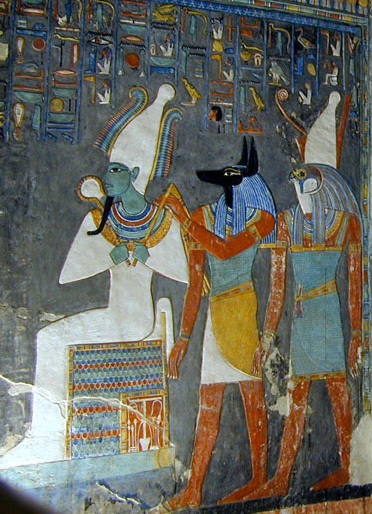
Osiris, Anubis and Horus, Valley of the Kings, Luxor, Egypt
Sky
Egyptian: Amun
Greek: Zeus
Roman: Jupiter
Moon
Egyptian: Isis
Greek: Selene
Roman: Luna
Sun
Egyptian: Ra
Greek: Helios
Roman: Sol
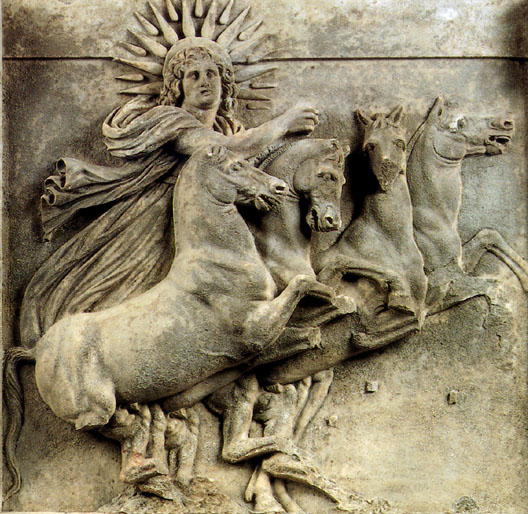
Helios relief, Temple of Athena, Troy
Night
Egyptian: Nephthys
Greek: Nyx
Roman: Nox
Darkness, storms, chaos
Egyptian: Set
Greek: Typhoeus
Roman: Typh
Love, sex, beauty
Egyptian: Hathor, Isis
Greek: Aphrodite (also Eros)
Roman: Venus (also Cupid)

Sculpture of Venus by Antonio Canova, Galleria Borghese, Rome
Marriage and family
Egyptian: Hathor (also Mut)
Greek: Hera
Roman: Juno
Home and hearth
Egyptian: Anuket
Greek: Hestia
Roman: Vesta
Wisdom, the arts
Egyptian: Neith, Isis
Greek: Athena
Roman: Minerva
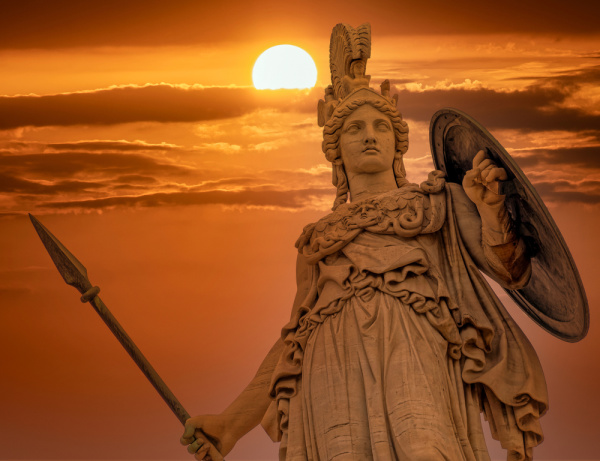
Statue of Athena, Athens, Greece
Time
Egyptian: Geb
Greek: Cronus
Roman: Saturn
Light, prophecy, healing, music, poetry
Egyptian: Horus
Greek: Apollo
Roman: Apollo
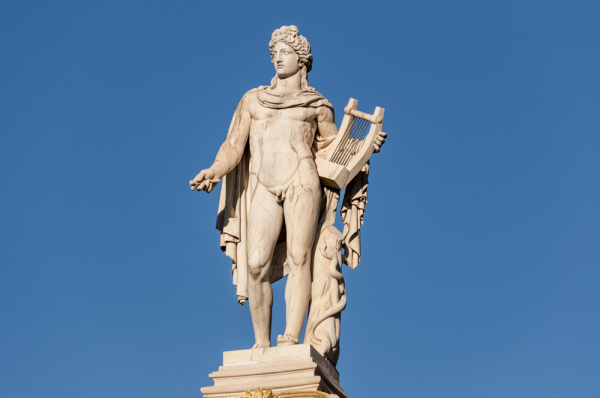
Statue of Apollo, Athens, Greece
Fertility (people and agriculture)
Egyptian: Isis
Greek: Demeter
Roman: Ceres
War
Egyptian: Anhur, Montu, Sekhmet
Greek: Ares
Roman: Mars
Fire, metalwork, forges
Egyptian: Ptah
Greek: Hephaestus
Roman: Vulcan
Death
Egyptian: Anubis
Greek: Thanatos
Roman: Mors
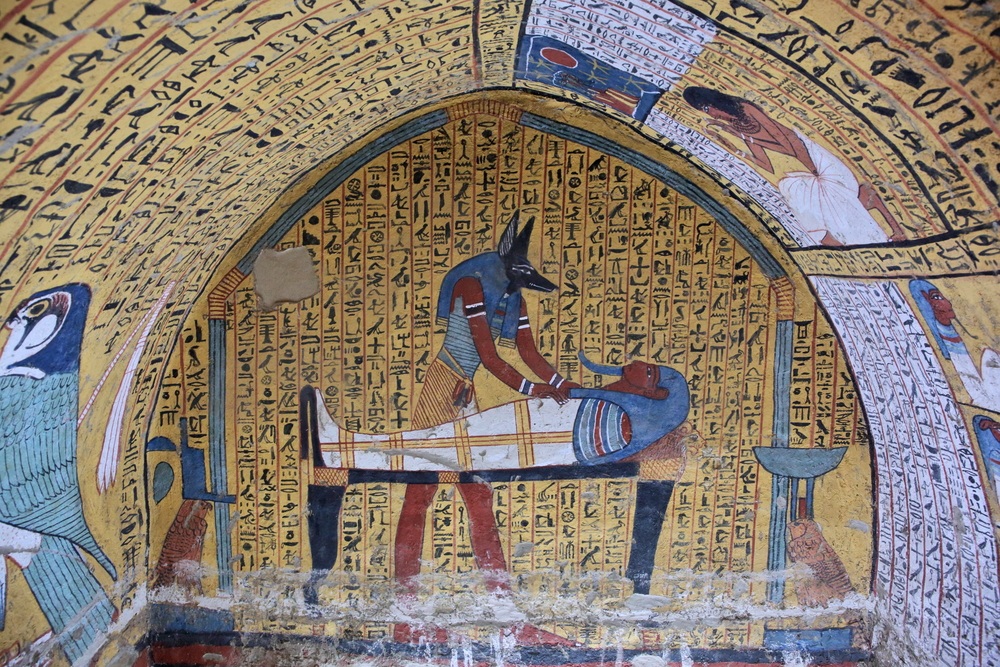
Anubis with the mummy of a pharaoh, Valley of the Kings
The afterlife, underworld
Egyptian: Osiris
Greek: Hades
Roman: Dis Pater, Pluto, Orcus
Transitions, travellers, commerce, thieves
Egyptian: Anubis, Thoth
Greek: Hermes
Roman: Mercury
Hunting, the wild, virginity, childbirth
Egyptian: Bastet
Greek: Artemis
Roman: Diana
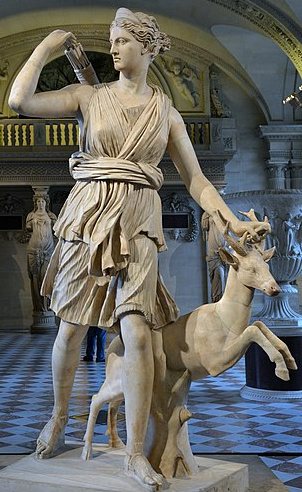
‘Diana of Versailles’ or ‘Artemis, Goddess of the Hunt’, the Louvre, Paris
Revelry, ecstasy, wine
Egyptian: Osiris
Greek: Dionysus
Roman: Liber, Bacchus

Photo credits: 1) Dimitrios P/Shutterstock; 2) A. Parrot/Wikipedia; 3) Gryffindor/Wikipedia; 3) public domain/Wikipedia; 4) Dimitrios P/Shutterstock; 5) Vangelis aragiannis/Shutterstock; 6) Vladimir Melnik/Shutterstock; 7) Commonists/Wikipedia.